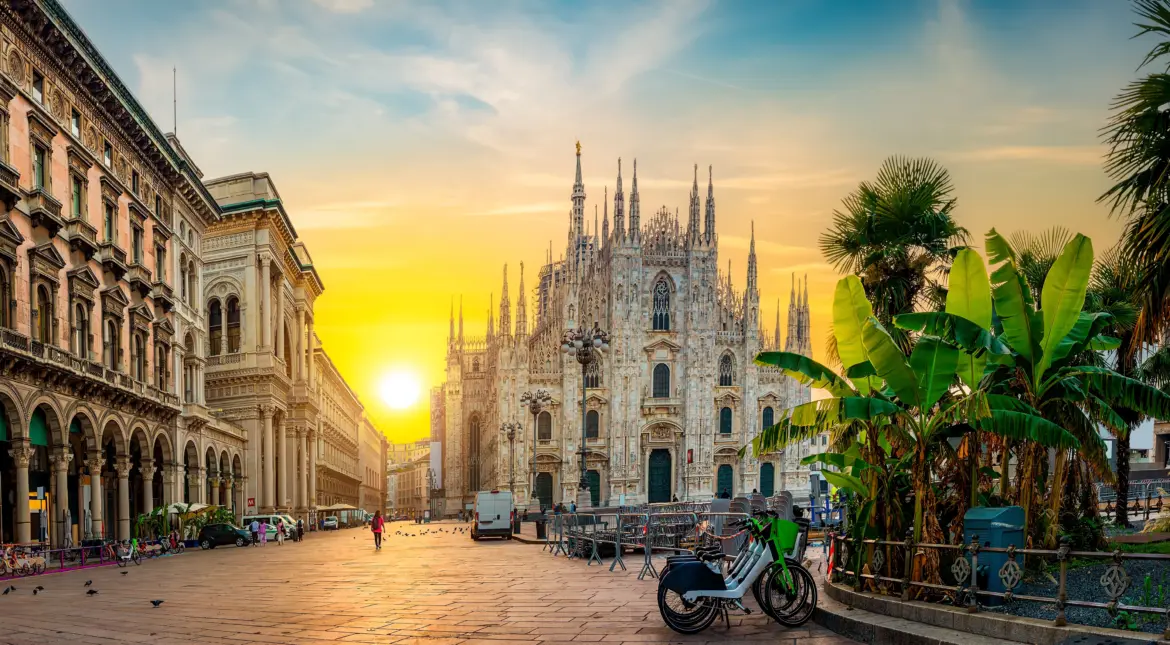Hello explorers and architecture lovers! ✨ Some landmarks instantly take your breath away, and for Milan, that landmark is the Duomo di Milano. On my recent visit, stepping into Piazza del Duomo and seeing the Duomo’s spires soar into the sky was one of those moments that stays with you. The sunlight bounced off the pale pink and white marble, pigeons circled overhead, street musicians played softly nearby, and the energy of the bustling square seemed to fade into the background as I stood in awe. It’s grand, intricate, and tells a story carved in stone that spans more than six centuries.
A Brief History & Why It Matters
The Duomo di Milano isn’t just a cathedral; it’s an epic project nearly 600 years in the making. Construction began in 1386 under the rule of Gian Galeazzo Visconti, who dreamed of a church that would rival Europe’s greatest cathedrals. Over the centuries, architects from Italy, France, and Germany contributed their talents, resulting in a unique mix of styles: primarily Gothic with elements of Renaissance and Baroque. The building features 135 spires and more than 3,400 statues, including saints, angels, and gargoyles.
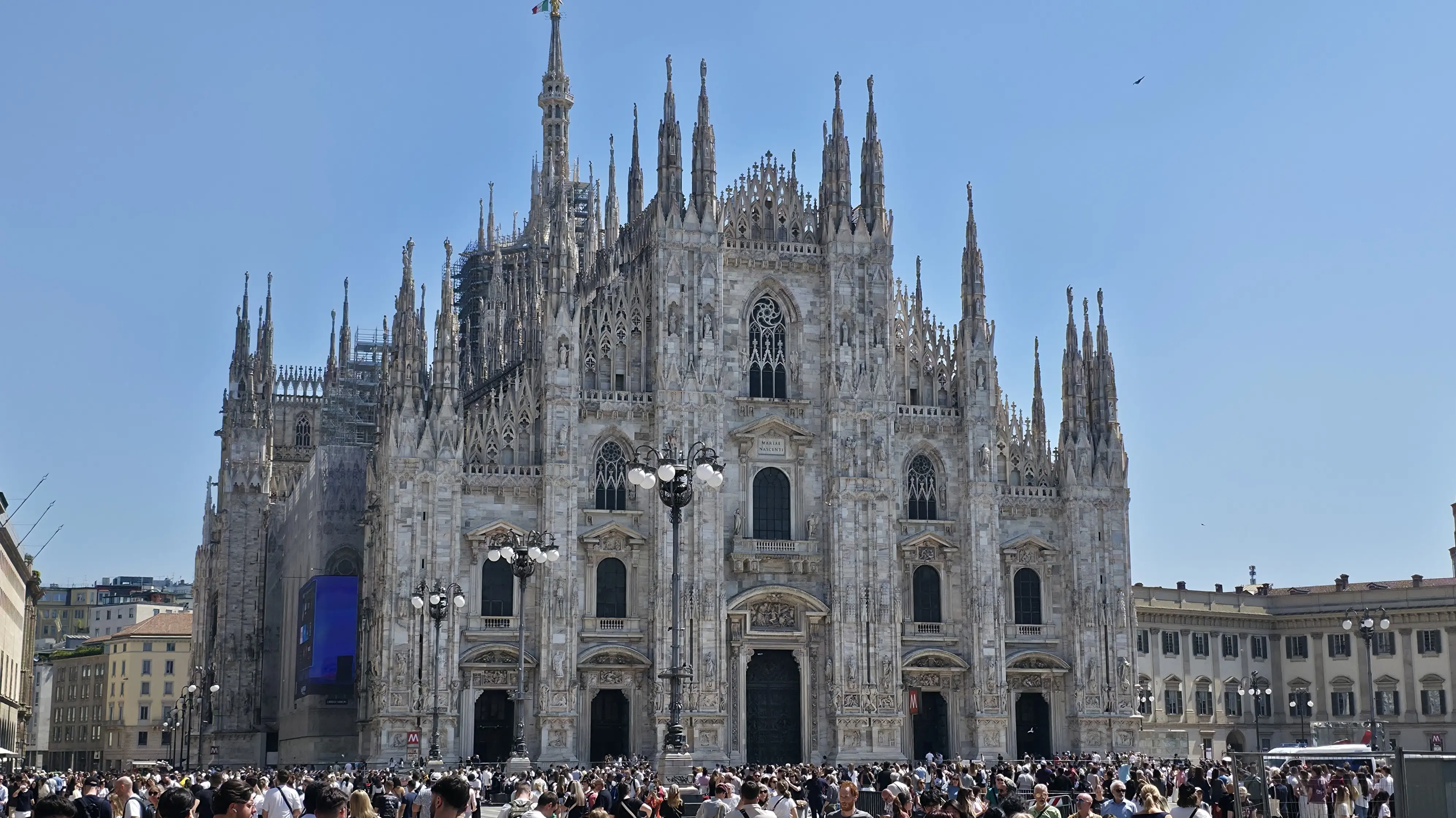
The Duomo has been a witness to major historical events, including the coronation of Napoleon Bonaparte as King of Italy in 1805. Today, it stands as Milan’s proudest symbol, topped by the golden Madonnina statue on its highest spire, which has become an emblem of protection for the city.
The Exterior: A Gothic Marvel
The exterior is breathtaking both from afar and up close. From the piazza, the Duomo looks like delicate lace carved from marble. As you move closer, you can appreciate the incredible detail of gargoyles, saints, floral motifs, and mythical creatures. Each façade tells a story, from biblical depictions to symbolic carvings of virtues and values.
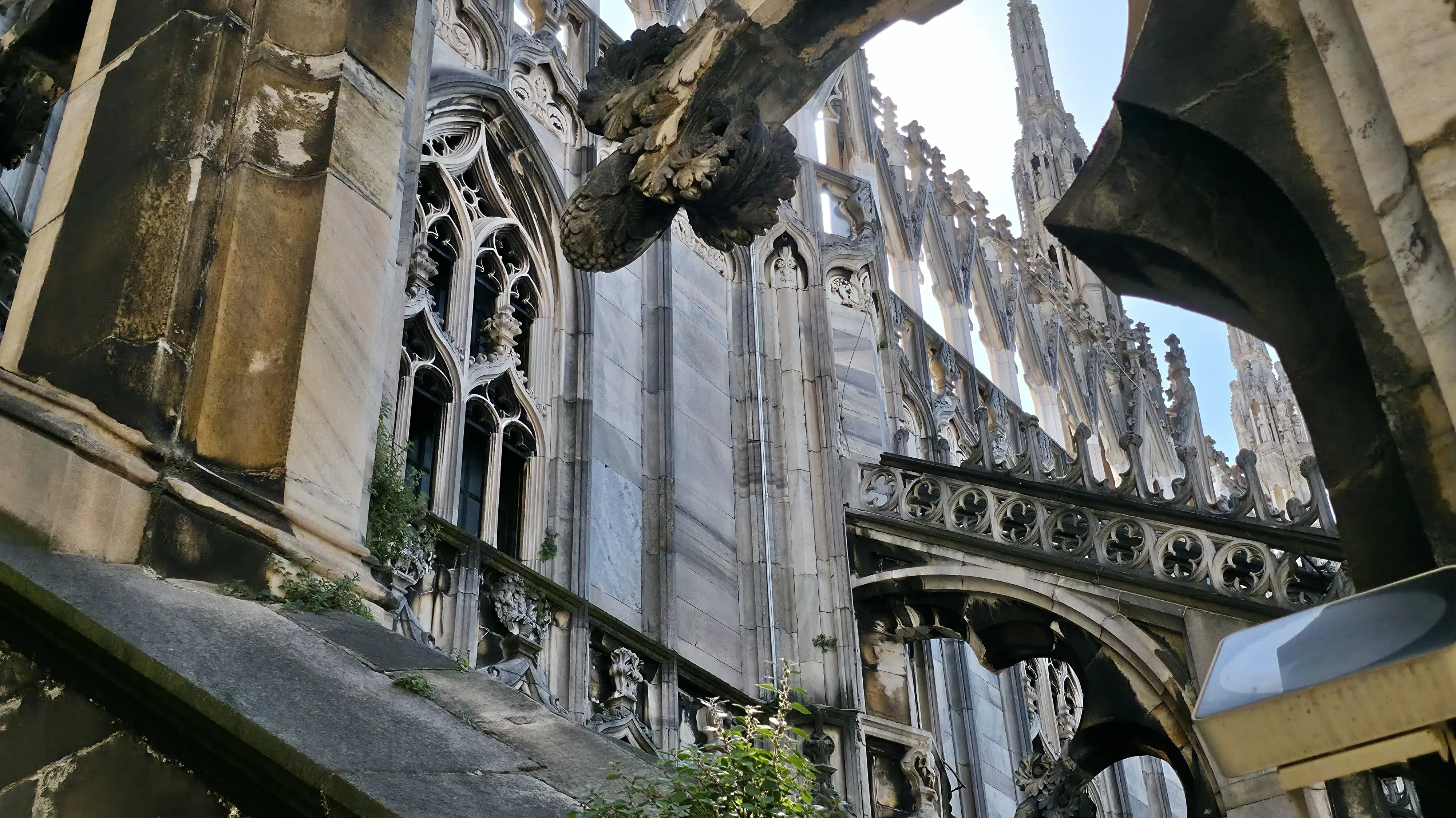
Walking around the Duomo is like taking a sculpture tour in the open air, every corner reveals new statues, spires, and decorative elements, some whimsical, others solemn. One highlight is the main façade, completed in the 19th century, which harmonizes centuries of design ideas into one cohesive and striking look. I loved discovering tiny, easily missed details, like carved faces hidden near rooflines and animal figures tucked between buttresses.
The Interior: Grandeur, Light & Sacred History
Stepping inside, the change in atmosphere is immediate: from the lively square to an environment of reverence and serenity. The first thing that catches your eye is the immense scale of the stone columns, 52 in total, each representing a week of the year, soaring up to the intricately ribbed ceiling. The filtered sunlight streaming through the stained glass creates pools of color that dance across the stone floor.
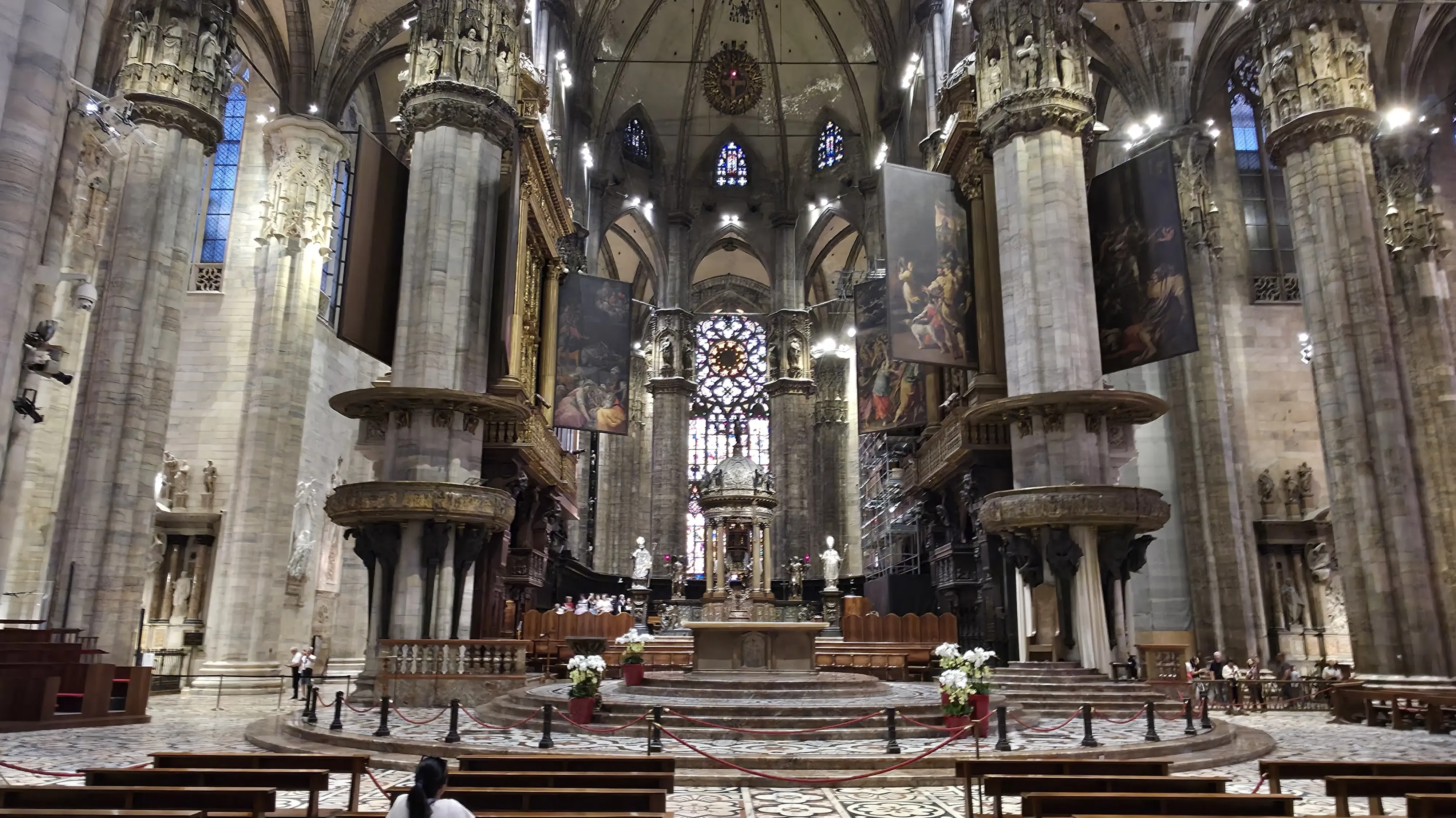
And then there’s the floor itself, a stunning work of art. Made from multicolored marble in intricate geometric patterns, it stretches like a mosaic tapestry beneath your feet. The designs are so elaborate and detailed that they almost feel three-dimensional, guiding you naturally toward the altar while reminding you that every inch of the Duomo was built to inspire awe.

Key highlights inside include:
- The Main Altar & Choir: Masterpieces of Renaissance craftsmanship, showcasing exquisite woodwork, marble carvings, and rich symbolism.
- Stained Glass Windows: These towering panels, some dating back to the 1400s, illustrate biblical stories in vibrant hues and intricate detail, acting as storytelling tools for centuries of worshippers.
- The Crypt & Archaeological Area: This sacred space houses the tomb of Saint Charles Borromeo and even remnants of earlier churches and Roman ruins discovered beneath the cathedral.
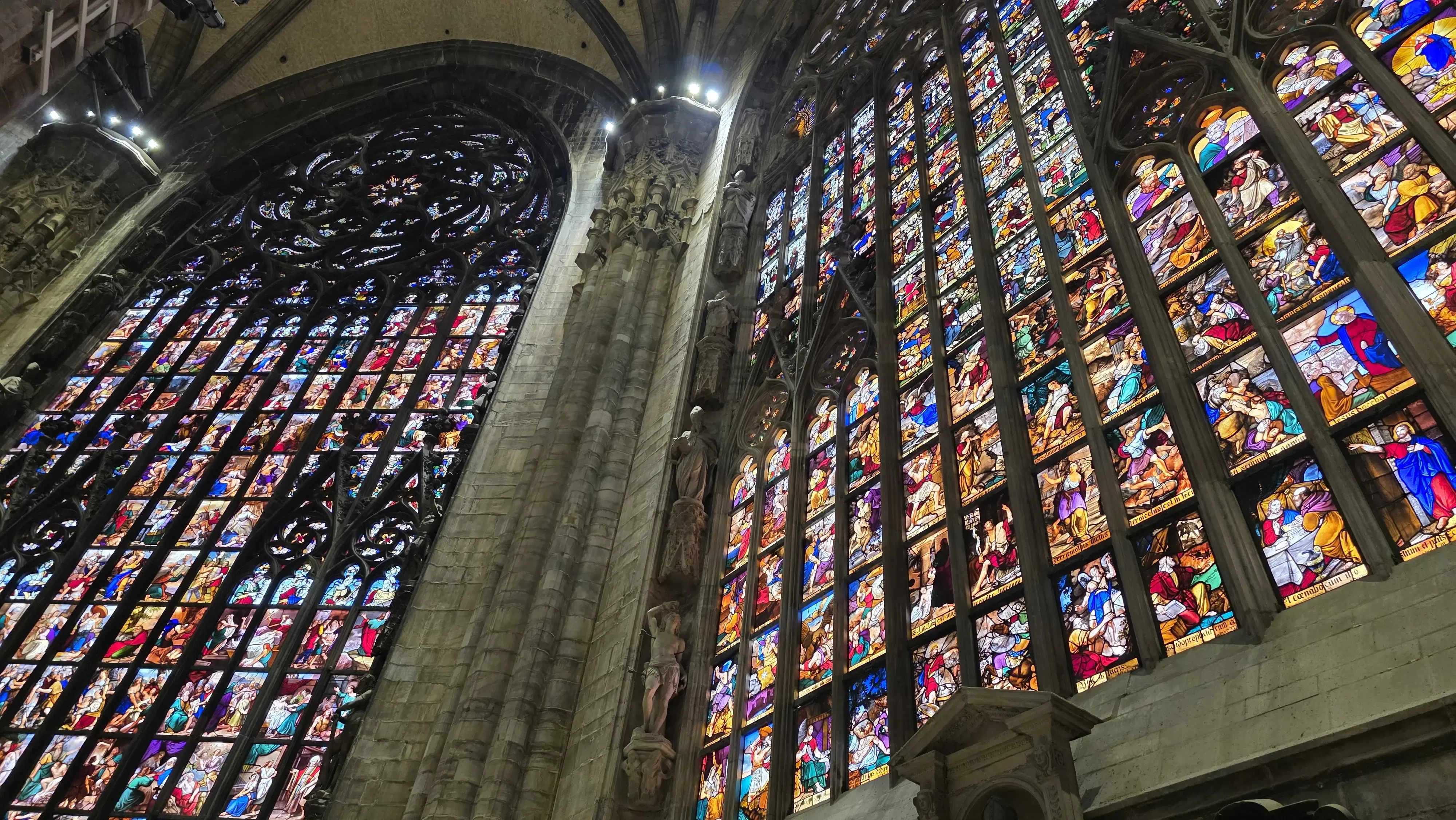
Even with crowds, there’s a unique stillness inside; footsteps echo softly against the marble floor, and the sheer volume of space makes voices fall to whispers. It’s a place to pause, reflect, and simply take in the artistry.
The Rooftop (Just a Peek!)
It’s worth noting that Duomo di Milano’s it’s one of Milan’s most unforgettable experiences. The terraces bring you face-to-face with ornate marble spires and statues, and the view stretches across the entire city, reaching as far as the Alps on clear days. Standing there, among stone guardians carved centuries ago, is an experience like no other.
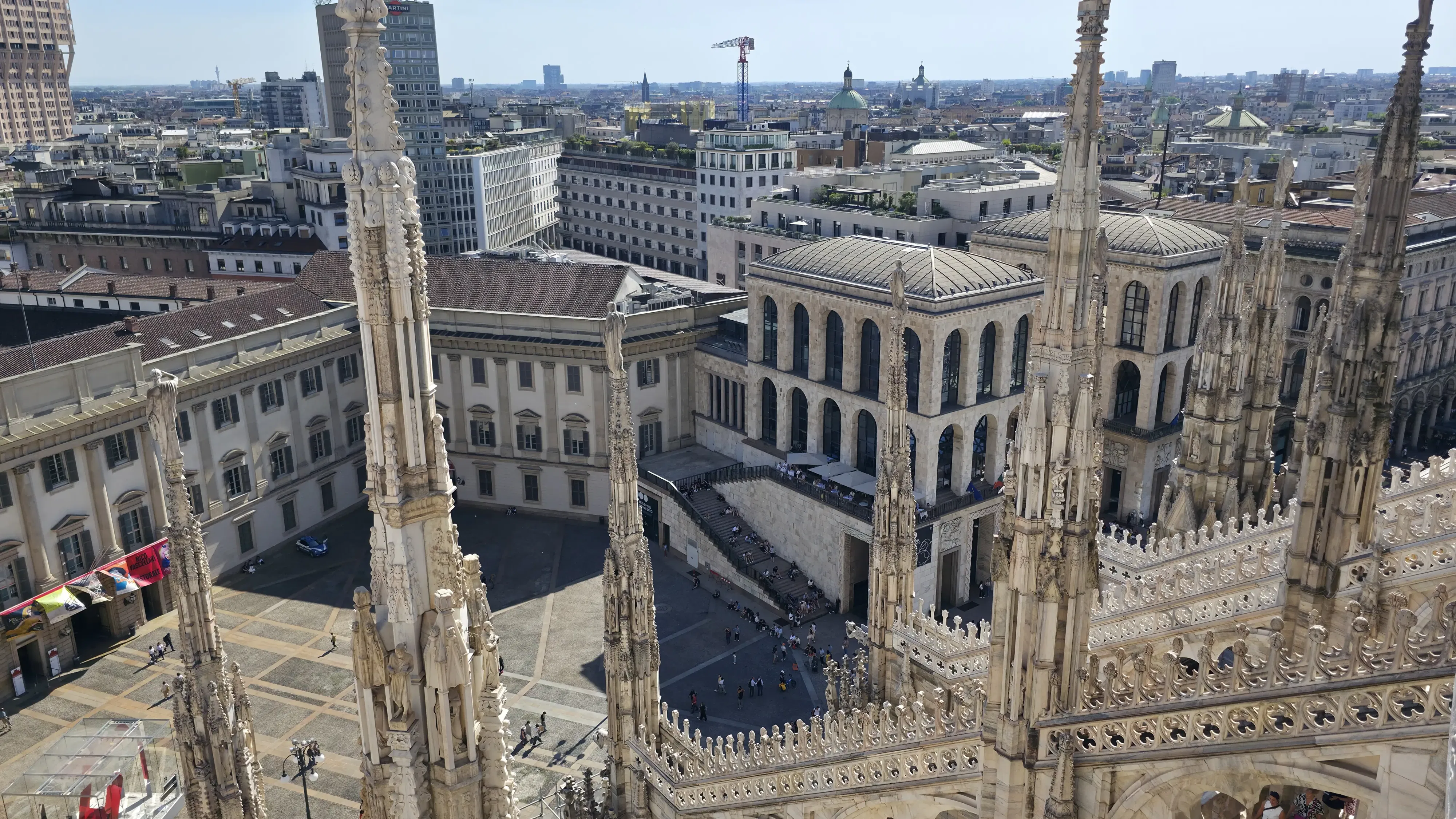
Tips for Visitors
- Tickets: Buy online to save time. Combination tickets for the cathedral, rooftop, and museum offer great value.
- Best Time to Visit: Early morning for quiet reflection and ideal light for photography; late afternoon for golden-hour views on the marble façade.
- Dress Code: As an active place of worship, shoulders and knees must be covered; a scarf or wrap is handy.
- Accessibility: Elevators are available for the rooftop, and accessible entrances make it easy for all visitors to enjoy the experience.
- Photography: Non-flash photography is permitted in most areas but check for signage in sensitive sections.
- Extra Tip: Step outside into Piazza del Duomo at sunset for a magical view of the cathedral glowing against the evening sky.
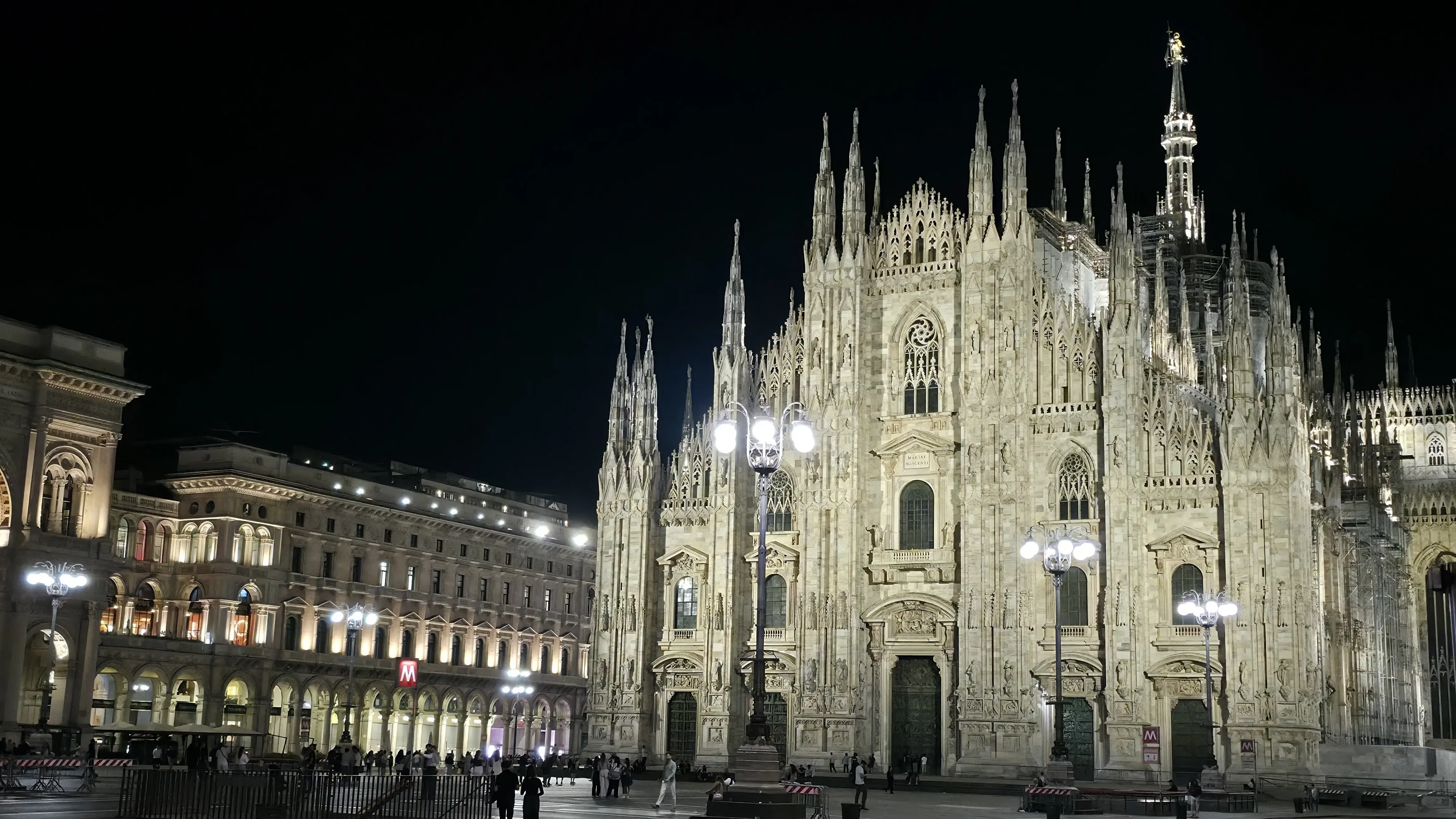
My Experience
Visiting the Duomo di Milano was one of those rare travel moments where history, art, and emotion collide. I remember stepping through the grand doors and feeling an instant shift from the lively square outside to a hushed, sacred space filled with cool air and a faint scent of old stone and candles. I wandered slowly down the main aisle, craning my neck to take in the soaring columns and vaulted ceiling that seemed to float above me.
I spent time studying the stained glass windows, each panel like a glowing storybook, and I sat for a few quiet moments in one of the pews, letting the sense of peace and timelessness wash over me. Even outside, simply sitting on the steps and watching life unfold in the piazza – locals rushing to work, street performers playing soft music, travelers snapping photos – was special. It gave me a feeling of being connected not only to the city’s present but also to centuries of history and devotion that the Duomo has witnessed.
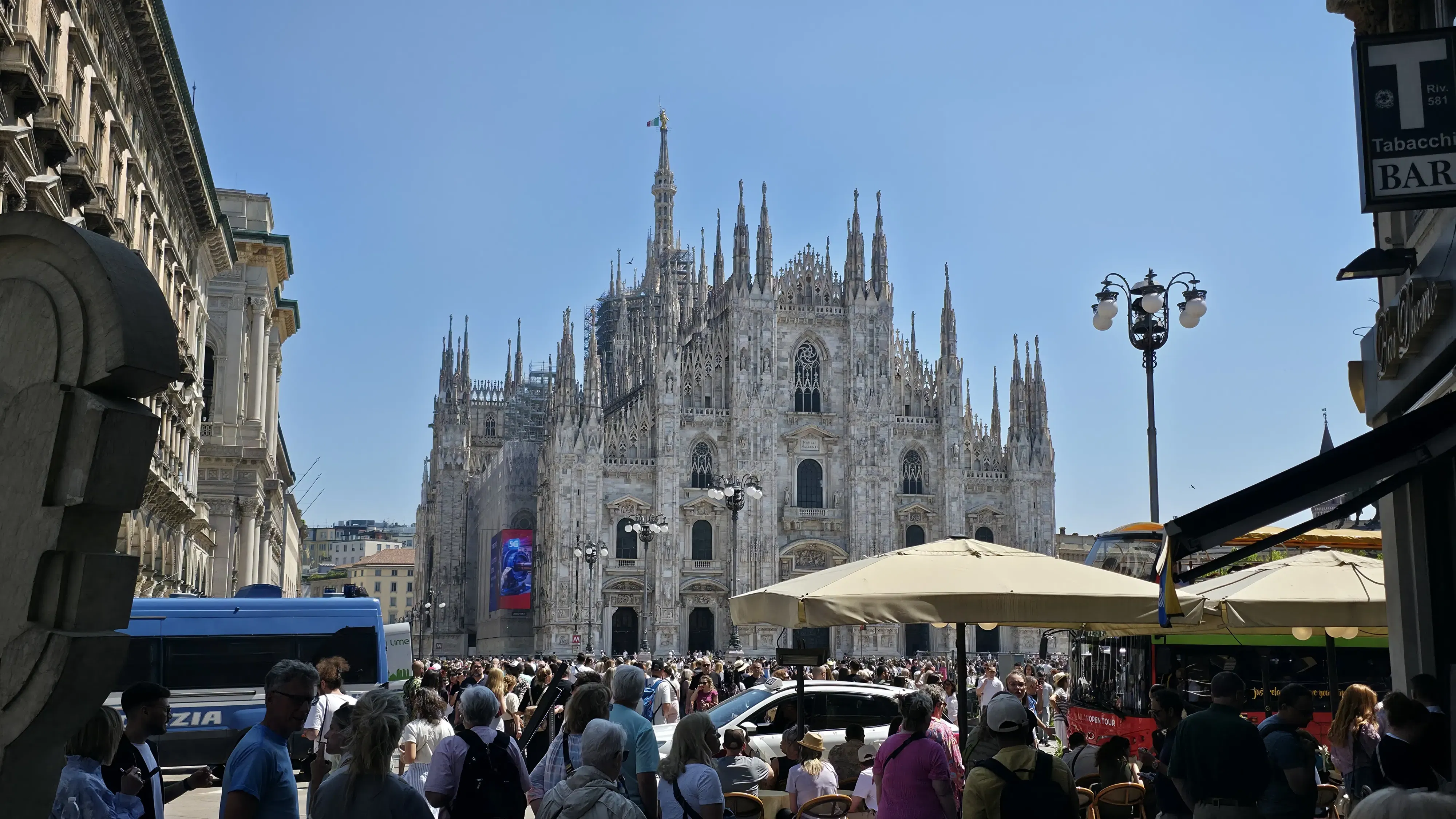
Final Thoughts
The Duomo di Milano is more than a building; it’s a cultural touchstone and a living work of art. Its elaborate façade, serene interior, and dramatic rooftop views make it an experience that appeals to travelers of all kinds, from architecture buffs to those simply seeking a moment of beauty and calm.
Whether you choose to linger outside marveling at its details, sit quietly inside reflecting, or climb straight to the rooftop spires, you’ll walk away with more than photos, you’ll leave with a sense of awe.
Would you linger outside marveling at its details, sit quietly in a pew soaking up the serenity, or climb straight to the rooftop spires? No matter how you explore it, the Duomo is not simply a stop, it’s an experience that captures the very essence of Milan
xoxo,
Bubbly🎈

